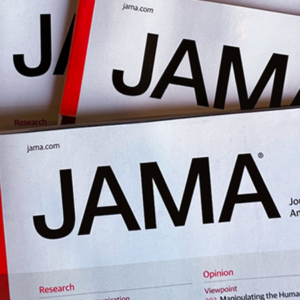פוסט זה זמין גם ב:
עברית
Free PMC article
Abstract 
Importance: Most patients presenting to US emergency departments (EDs) with acute pulmonary embolism (PE) are hospitalized, despite evidence from multiple society-based guidelines recommending consideration of outpatient treatment for those with low risk stratification scores. One barrier to outpatient treatment may be clinician concern regarding findings on PE-protocol computed tomography (CTPE), which are perceived as high risk but not incorporated into commonly used risk stratification tools.
Objective: To evaluate the association of concerning CTPE findings with outcomes and treatment of patients in the ED with acute, low-risk PE.
Design, setting, and participants: This cohort study used a registry of all acute PEs diagnosed in the adult ED of an academic medical center from October 10, 2016, to December 31, 2019. Acute PE cases were divided into high- and low-risk groups based on PE Severity Index (PESI) class alone or using a combination of PESI class and biomarker results. The low-risk group was further divided based on the presence of concerning CTPE findings: (1) bilateral central embolus, (2) right ventricle-to-left ventricle ratio greater than 1.0, (3) right ventricle enlargement, (4) septal abnormality, or (5) pulmonary infarction. Data analysis was conducted from June to October 2022.
Main outcomes and measures: The primary outcome was all-cause mortality at 7 and 30 days. Secondary outcomes included hospitalization, length of stay, need for intensive care, use of echocardiography and/or bedside ultrasonography, and activation of the PE response team (PERT) .
Results: Of 817 patients (median [IQR] age, 58 [47-71] years; 417 (51.0%) female patients; 129 [15.8%] Black and 645 [78.9%] White patients) with acute PEs, 331 (40.5%) were low risk and 486 (59.5%) were high risk by PESI score. Clinical outcomes were similar for all low-risk patients, with no 30-day deaths in the low-risk group with concerning CTPE findings (0 of 151 patients) vs 4 of 180 (2.2%) in the low-risk group without concerning CTPE findings and 88 (18.1%) in the high-risk group (P < .001). Low-risk patients with concerning CTPE findings were less frequently discharged from the ED than those without concerning CTPE findings (3 [2.0%] vs 14 [7.8%]; P = .01) and had more frequent echocardiography (87 [57.6%] vs 49 [27.2%]; P < .001) and PERT activation for consideration of advanced therapies (34 [22.5%] vs 11 [6.1%]; P < .001).
Conclusions and relevance: In this single-center study, CTPE findings widely believed to confer high risk were associated with increased hospitalization and resource utilization in patients with low-risk PE but not short-term adverse clinical outcomes.




 Connor O’Hare
Connor O’Hare

